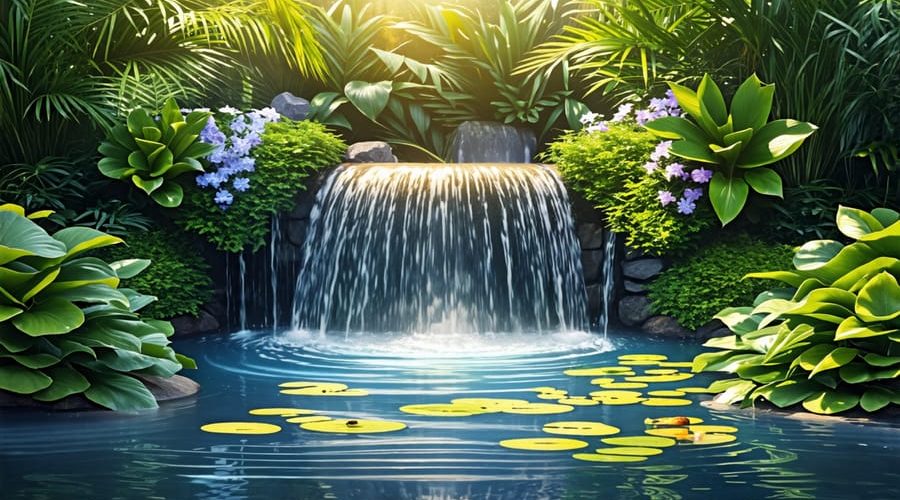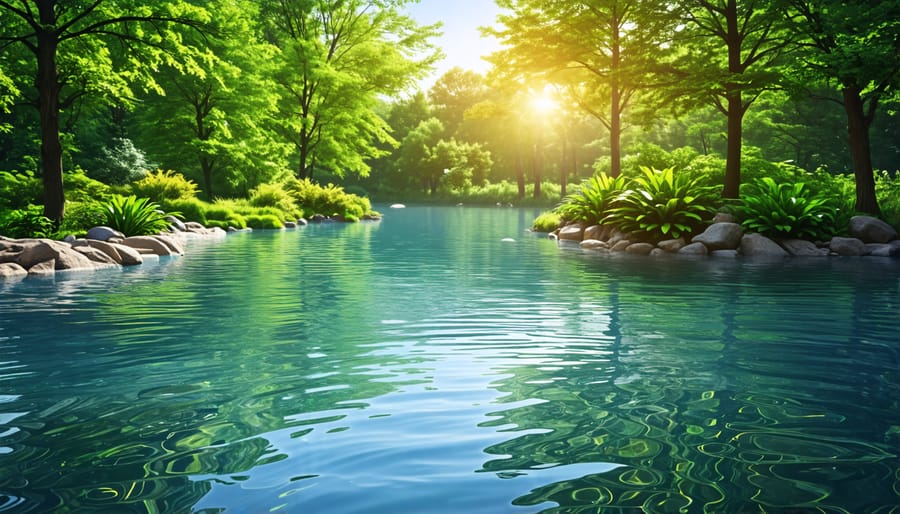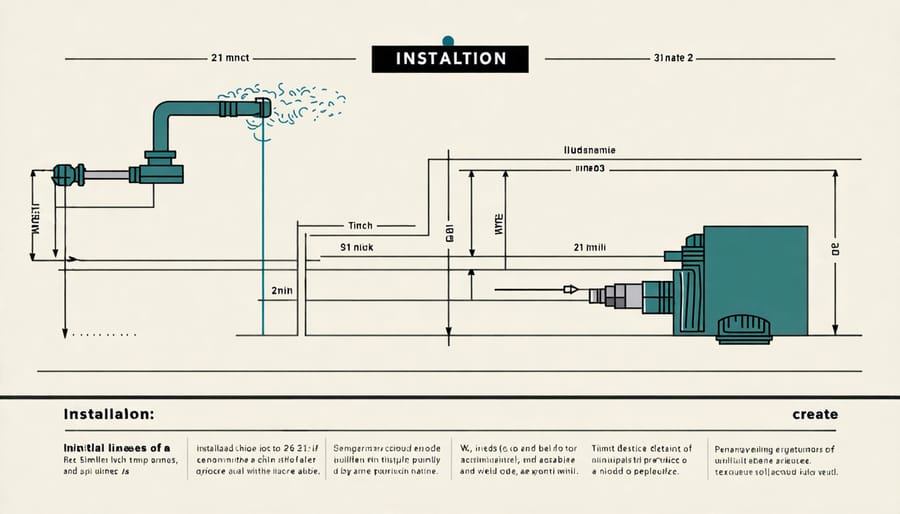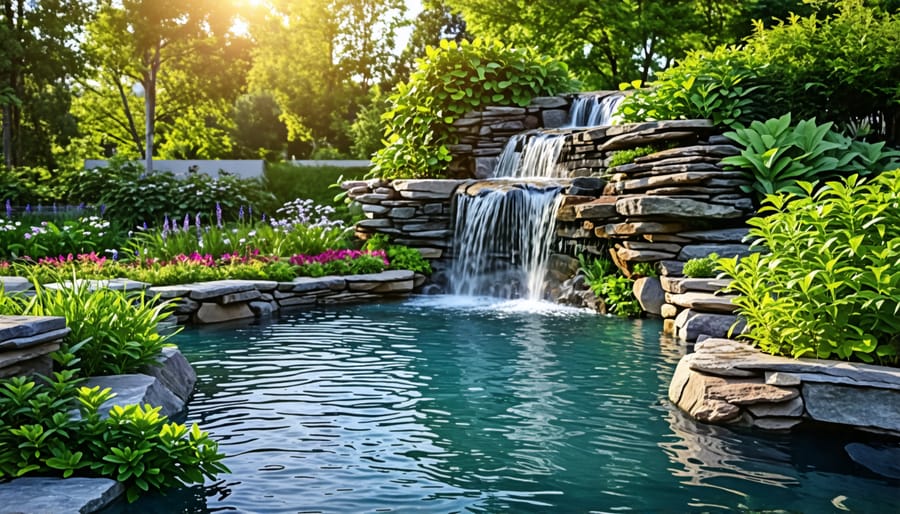
Keep Your Pond Beautiful: Easy Tips for Circulating Water Like a Pro
Install a pond pump to ensure consistent water flow and aeration. Choose an appropriately sized model for your pond’s volume, positioning it to create a circular or figure-eight pattern for optimal circulation. Introduce a pond fountain for both aesthetic appeal and function, as the water’s upward spray helps oxygenate the pond, keeping it healthy for wildlife and preventing stagnant areas. Add strategically placed waterfalls or streams, utilizing gravity to aid circulation while enhancing the visual landscape. Regularly clean pumps and filters to maintain efficiency, ensuring they are free from debris that could impede water flow.
Why Water Circulation Matters
Water circulation in a pond is not just a fancy addition; it’s a crucial element in maintaining a thriving aquatic environment. One of the primary benefits of circulating water is maintaining optimal oxygen levels. Just like us, fish and beneficial bacteria need oxygen to survive. A well-circulated pond ensures that oxygen is evenly distributed, keeping your aquatic friends happy and healthy.
Moreover, proper water circulation helps reduce algae growth. Algae thrive in stagnant water, especially when the sun heats up your pond. By moving the water around, you disrupt algae’s growth cycle, making your pond look clearer and reducing the frequency of those pesky cleaning tasks.
Circulated water also supports a more robust ecosystem. Beneficial bacteria, which help break down fish waste and other organic materials, are more efficient when the water is moving. This natural filtration process keeps your pond cleaner and your fish healthier. The gentle movement also mimics natural environments, providing a habitat that promotes biodiversity and encourages a variety of aquatic life to flourish.
Personally, I’ve found that watching the ripple effects of a well-circulated pond is incredibly satisfying. There’s something magical about seeing the water come alive, almost as if it’s breathing. For DIY enthusiasts and pond lovers alike, setting up a circulation system not only contributes to a pond’s health but also adds a tranquil soundscape to your garden. Whether you’re an experienced water gardener or a beginner, the benefits of circulating water are clear—literally and figuratively!

Methods to Circulate Water in Your Pond
Using a Pump
Using a pump to circulate water in your pond can make a huge difference in its overall health and appearance. If you’re a DIY enthusiast or a budding water gardener, here’s how to get started.
First, decide on the right pump for your pond. Consider the size of your pond and the amount of water you need to move. Generally, your pump should be able to circulate the entire volume of your pond every two hours. For instance, if you have a 1,000-gallon pond, look for a pump with a flow rate of at least 500 gallons per hour (GPH). For more detailed pond pump tips, check out our guidelines.
Next, think about the type of pump. Submersible pumps sit underwater and are usually easier to install, making them ideal for small to medium-sized ponds. External pumps, on the other hand, are more efficient and durable for larger setups. Make sure your choice aligns with the specifics of your pond.
Once you have your pump, installation begins! Start by placing the pump at the deepest point of the pond. This helps with even water distribution. If it’s a submersible pump, ensure it’s fully submerged to prevent it from overheating. Connect the pump’s outlet to a hose that will direct water to where you want it to go—like a waterfall or fountain feature.
Next, plug in the pump. If all is connected properly, you should see your water beginning to circulate. Keep an eye on the operation. You want to ensure there’s no clogging, especially if your pond has a lot of debris or plant matter. Regular maintenance is key to keep your pump working smoothly and your pond healthy.
Using a pump not only keeps your pond from stagnating but also provides essential oxygenation for fish and plants, enhancing your backyard oasis. With a bit of patience and these steps, you’re well on your way to mastering water circulation in your pond.

Deploying Fountains or Waterfalls
Incorporating fountains or waterfalls into your pond is a fantastic way to boost water circulation while adding a touch of elegance and tranquility. For DIY enthusiasts like yourself, this project can be both rewarding and straightforward. Let’s dive into the process!
First, choose the right fountain or waterfall feature that complements your pond’s size and style. A small fountain is ideal for compact ponds, while a cascading waterfall suits larger spaces. Always select a pump powerful enough to support your chosen water feature, as this is crucial for maintaining optimal circulation.
Now, let’s talk installation. Begin by placing the pump at the pond’s bottom, ensuring it’s fully submerged and stable. Connect it to a power supply, ensuring cords are securely hidden to maintain the pond’s natural aesthetic. If you’re opting for a fountain, attach the nozzle to the pump, aiming for a gentle yet thorough water flow. For waterfalls, construct the falls using rocks or a preformed waterfall unit above the pond’s edge, positioning the tubing to facilitate the water’s journey down.
To personalize your feature, consider adding aquatic plants around the base or spotlighting with LED lights for nighttime allure. Remember a personal tip: periodically adjust the fountain’s height or the waterfall’s flow to find the perfect balance, enhancing both circulation and the soothing sound of moving water.
Regular maintenance is key to ensuring your water feature runs smoothly. Clean the pump and adjust water levels as needed to keep everything in tip-top shape. With these steps, your pond won’t just circulate water efficiently but will also become the peaceful retreat you envisioned. Enjoy your new oasis!

Natural Plant-Led Circulation
Enhancing your pond’s water circulation can be as simple as using nature’s own tools—plants! Certain water plants are not just for beauty; they help with the gentle movement of water, which is excellent for maintaining a healthy pond ecosystem. These plants can subtly channel water currents, encourage oxygenation, and provide habitats for beneficial microorganisms.
Start by incorporating floating plants like water hyacinths or water lettuce. These plants have roots that dangle in the water, helping to stir it as they move with the breeze. Simply place a few of these plants on the pond’s surface and let nature do the rest. Not only do they circulate water, but they also offer natural shade, reducing algae growth.
Submerged plants like hornwort and anacharis are another fantastic option. As they grow and photosynthesize, their movements promote water mixing. Plant them in mesh containers at varying depths around your pond. This step is especially effective in more stagnant areas, providing valuable aeration.
Marginal plants such as cattails and irises can also aid in circulation. Position these around the edges where wind action is most pronounced. Their tall stalks capture the breeze, gently disturbing the surface.
Incorporating these plant species into your pond isn’t just eco-friendly; it’s a dynamic way to enhance water movement naturally. Plus, as a bonus, they contribute to your pond’s overall aesthetic and health. With these natural methods in place, you’ll create a tranquil oasis that’s both pleasing to the eye and beneficial to the environment.
Common Mistakes to Avoid
One common pitfall when circulating water in a pond is neglecting the importance of selecting the right equipment, like choosing the best filters for your setup. Filters are crucial for maintaining water clarity and quality, and skimping on their capacity can lead to murky water and unhealthy plants and fish. Another frequent mistake is placing the pump at the wrong depth or location, which can lead to inadequate water movement. Ensure your pump is positioned at the deepest point but avoid letting it rest on the bottom to prevent clogging with debris. Many beginners also overlook regular maintenance, like cleaning filters and checking pump functionality, leading to reduced efficiency over time. To avoid these issues, establish a routine maintenance schedule. Finally, ensure you have the right balance between too much and too little circulation to maintain a healthy pond environment for aquatic life, avoiding stagnation or excessive turbulence.
Personal Anecdotes and Tips
One summer evening, I was admiring the pond in my backyard when I noticed the water looked a bit stagnant. A fellow water gardener advised, “Imagine your pond is like a giant cup of tea – you need to stir it to keep it fresh.” This led me to install a small but efficient fountain pump, which transformed the pond into a vibrant aquatic oasis with crystal-clear water and happy fish. For beginners, ensure your pump is proportional to your pond’s size to circulate water effectively. In colder months, a floating de-icer can help maintain circulation without freezing over. Keep experimenting and your pond will thrive!
Conclusion
In conclusion, understanding and implementing circulation techniques is key to nurturing a thriving pond. By keeping water moving, you help maintain a balanced ecosystem, reducing algae and promoting healthier fish and plants. Start experimenting with these techniques today and watch your pond transform into a vibrant, lively feature in your outdoor space.
